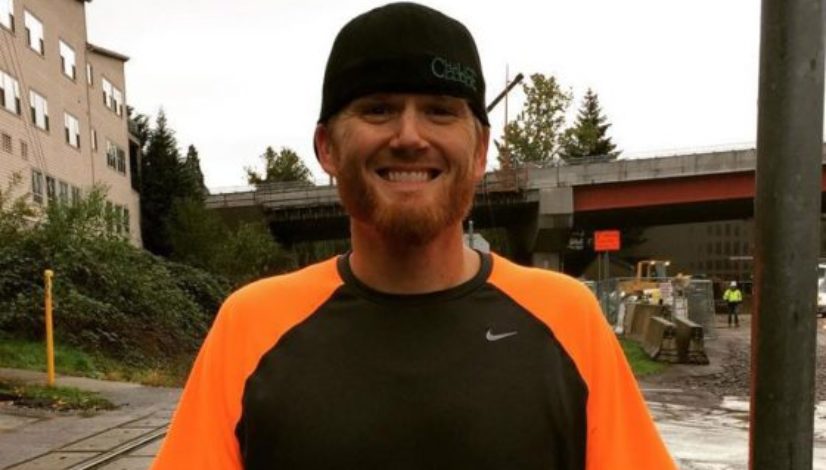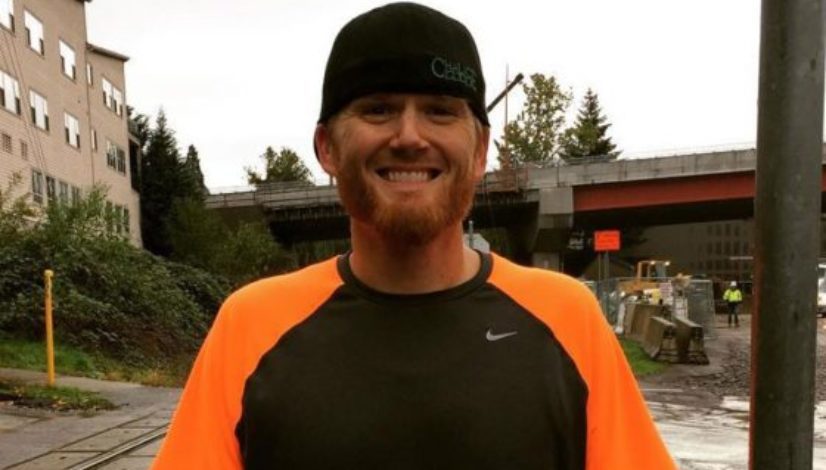Can cannabis help you get in shape?

Published: Nov 16, 2017, 2:07 pm • Updated: Nov 16, 2017, 2:07 pm
By Brooke Edwards Staggs, The Cannifornian
Before Tyler Hurst sets out for his morning run, he slips on a pair of those shoes that fit each toe like a glove. Then he takes a few hits off a vape pen packed with Agent Orange, a particularly uplifting strain of cannabis.
“The chemicals that are released in our brains when we run are the same ones that are released when we get high,” said Hurst, 38, a freelance writer and recreational runner who lives in Phoenix.
“I just run a lot better once I have my runner’s high.”
Forget the stereotype that suggests weed creates junk food-loving couch potatoes. Hurst is part of a fast-growing world of athletes — from pros to weekend fitness enthusiasts — who are incorporating cannabis into regular workouts and competitions.
Some are tapping into marijuana’s psychoactive effects to quiet the brain during intense yoga sessions and other mind-oriented sports, such as running or swimming. Others use cannabis products that don’t make them high but instead create effects that users insist help them train harder and longer, with less pain and faster recovery times.
New science is emerging to support some of those claims. Research suggests marijuana can keep muscle spasms at bay, prevent inflammation — even reduce the likelihood of brain injuries.
The governing bodies for most sports still ban cannabis, citing the drug’s complicated legal status while alternately labeling it as either too helpful or too harmful to athletic performance. That’s led to a string of athletes facing fines and suspensions over weed.
But cracks in those bans are starting to appear. Everything from the growing push for marijuana legalization, outrage over the use of prescribed opioids and fears about the long-term effects of concussions are all prompting sports to look again at weed.
The World Anti-Doping Agency, which regulates drug use for the Olympics, announced earlier this month that in 2018 it will no longer ban CBD, the compound in cannabis thought to have the most medical benefits without any mind-altering effects. And leaders in the NFL, NBA and other American pro sports leagues are starting to reconsider their cannabis policies.
Another factor is the nature of stories told by retired sports figures who increasingly are speaking out about how cannabis helped them.
“We’ve been fundamentally misled,” said Riley Cote, who co-founded Athletes for Care, an organization that helps athletes adjust to life after sports.
Cote said he smoked cannabis throughout his eight seasons in pro hockey, including three years as a left winger for the NHL’s Philadelphia Flyers.
Though weed was (and is) a violation of league policy, Cote said he took the risk because cannabis helped him manage pain, anxiety and sleep issues.
He was hardly alone. In every league, Cote said he found “a decent-sized group of guys” who chose marijuana over painkillers to treat and even prevent injuries on the ice.
“I view cannabis as a holistic phenomena,” Cote said. “This is a universal healer.”
Such voices are helping this trend of mixing weed and fitness catch on, with everyone from elite athletes to regular folk trying to lose a few pounds jumping on board.
A growing trend
In San Francisco, a marijuana-friendly gym is slated to open next year. Infused yoga classes, in which cannabis consumption is part of the routine, are popping up everywhere. And the 420 Games, a series of runs and other competitions, is an increasingly popular multi-city event aimed at promoting the idea that weed can be part of an athletic lifestyle.
There’s also cannabis-oriented gear and products aimed at people who love sport, including topical creams and recovery serums. And some athletes, such as Tanner Hall — a well-known freestyle skier and former X-Games champion — are coming out with their own marijuana product lines.
Cannabis company Weedmaps recently backed a skateboarding competition at Venice Beach, while Illinois cultivator Cresco Labs has been a sponsor of the Chicago marathon.
In August, prior to fighting in the undercard for the Floyd Mayweather vs. Conor McGregor bout in Las Vegas, boxer Andrew Tabiti entered the ring wearing a hat from sponsor FlavRx, a San Diego company that makes cannabis edibles and concentrates.
Ultramarathoner Avery Collins is sponsored by multiple cannabis companies, including Colorado-based edibles company Incredibles.
Collins reached out to Incredibles a couple years ago, company co-founder Bob Eschino said, to let them know he was using their energy bars as fuel before long runs. Eschino said it felt like a “great match” to back the young runner.
“The one thing my company has tried to do is change some of the perspectives that are out there about cannabis users,” Eschino said. “As more and more athletes come out, I think it’s very important to showcase them and help break some of the stereotypes.”
How it works
The pairing of sports and cannabis makes sense to Greg Gerdeman, a Florida neuroscientist who for 20 years has studied how marijuana works in the brain.
He was a graduate student in Vanderbilt University’s pharmacology program in the mid-1990s, when scientists first started to understand the endocannabinoid system.
Humans produce a range of chemical compounds called endocannabinoids. They help keep our bodies stable by binding to receptors on cell membranes and controlling the release of chemical messengers that regulate everything from how we experience pain to our moods.
While our endocannabinoid systems naturally help maintain a state of homeostasis, or stability, we can be thrown off balance by physical conditions such as multiple sclerosis, certain cancer treatments and strenuous physical activity. That’s when introducing cannabinoids produced outside the body might help.
Marijuana contains dozens of cannabinoids — the most well-known of which are CBD and THC, the latter being the compound that makers consumers high. These cannabinoids are not identical to the compounds our bodies produce, but some seem to act in much the same way, helping to reduce swelling, dull nerve pain, improve volatile moods and more.
Gerdeman was involved in a 2012 study suggesting the joy that many runners and other endurance athletes feel is linked to an increase in our bodies’ cannabinoid production. Boosting that affect by adding plant-based cannabinoids might then encourage better health, he said, by making workouts and competitions more enjoyable.
The brain also releases cannabinoids in response to injury, Gerdeman said — whether it’s a stroke or a hard hit from a linebacker. That shows cannabinoids are neuroprotectants, he said, meant to help keep the brain safe. And so — while rigorous research in this area is needed — he said it’s reasonable to argue that using cannabis might help prevent brain injuries in football players and other athletes who regularly take hard hits to the head.
When he played hockey, Cote was known as a fighter, estimating he got into at least 250 fights over the years. He’s convinced that steady cannabis use helped him come out the other end with no signs of chronic traumatic encephalopathy, or CTE, which is plaguing so many athletes in contact sports.
There’s also good evidence that proper doses of cannabis can help reduce anxiety and inflammation, both of which can hold athletes back.
Hurst explains the effect of running on cannabis like this: “I noticed that I feel just as relaxed before a race as I do after. And I feel just as strong after a race as I do at the beginning.”
Many of these touted benefits for athletes are still anecdotal, said Dr. Ari Greis, a Pennsylvania physician who specializes in rehabilitative medicine and pain management. He said that’s partly because the federal government still classifies marijuana as a Schedule I drug, which makes all research — and human trials in particular — extremely difficult.
A study by Australian pharmacologist Michael C. Kennedy, published in September’s Journal of Science and Medicine in Sport, found only 15 studies published in English have even examined the impact of THC on exercise.
Related stories
- Cannabist Show: She’s a fit cannabis girl breaking stigmas
- Panama Punch (marijuana review with video)
- Yoga and cannabis: Ganjasana melds plant science and an ancient tradition
- 420 Games are about defying the “lazy stoner” stereotype, says creator
- Can microdosing enhance your fitness routine?
There are studies showing THC can elevate heart rates, which Greis said could be bad news for someone who already has a heart condition or is new to working out.
Still, some athletes have spoken so fondly about the benefits of cannabis that opponents have suggested it should be considered a performance-enhancing drug.
But Kennedy’s review of the research done so far found that THC doesn’t enhance either strength or aerobic endurance.
Greis also points out that THC can impact motor coordination and reaction times, which is why people can’t legally drive while high. So, even though some experienced consumers can function at very high levels, he said it doesn’t make sense that athletes would perform better after smoking weed that’s potent in THC.
Hurst, the runner from Phoenix, agrees.
“There’s nothing I can do high that I can’t do sober,” Hurst said. “It just feels better.”
How to mix weed with your workout
For people interested in incorporating cannabis into their fitness routines, experts offer these tips.
- Get to know marijuana laws. Only eight states allow recreational consumption. People in 30 states can use cannabis medicinally, though most states have strict rules about what conditions qualify. Also, most states have rules against public consumption and smoking is banned in all national parks and other federal properties.
- Know the rules of your sport. Pro athletes are told to abide by rules of their governing league or organization, which often ban THC or all cannabis compounds. But even amateur athletes may run into bans if they decide to participate in sanctioned marathons or other regulated events.
- Learn the difference between CBD and THC. CBD doesn’t make consumers high, but it is believed to have some value in reducing inflammation, muscle spasms and anxiety. A version of CBD is sold to the public, through stores such as Trader Joe’s and Whole Foods. THC is marijuana’s main psychoactive component, and is legal only in states that allow recreational cannabis or with a doctor’s recommendation in states that have legalized medical marijuana. It is said to help athletes with focus, energy and dulling pain, though it also reduces reaction time and possibly cognitive skills in young people.
- Start slowly. Greis suggests that anyone new to cannabis or anyone starting to incorporate cannabis into their workout routine should start slowly and, initially at least, avoid THC during workouts. Some studies show THC can elevate heart rates, a potential problem for someone who already has a heart condition or is new to working out.
- Think beyond smoking. While there’s little evidence that smoking marijuana poses serious risks of cancer or limiting lung capacity, Gerdeman says smoking cannabis can cause coughing and excess phlegm. He recommends athletes consider vaporizing whole cannabis flowers or trying tinctures, topical balms and other products on the market. Other options include cannabis-infused edibles, though those take time to kick in and can be tricky to properly dose.
Jon Kennedy with NORML Athletics, a fitness-focused division of the cannabis advocacy group NORML, hopes the “stoner stereotype” — which suggests cannabis and exercise don’t mix — will fade.
“It’s not so much about following this structured program that includes cannabis in a deliberate, measured way,” Kennedy said. “It’s more along the lines of creating a system where everyone values exercise and does a little bit every day.”
This story was first published on TheCannifornian.com
Topics: athletes, Athletes for Care, fitness, health, workout




